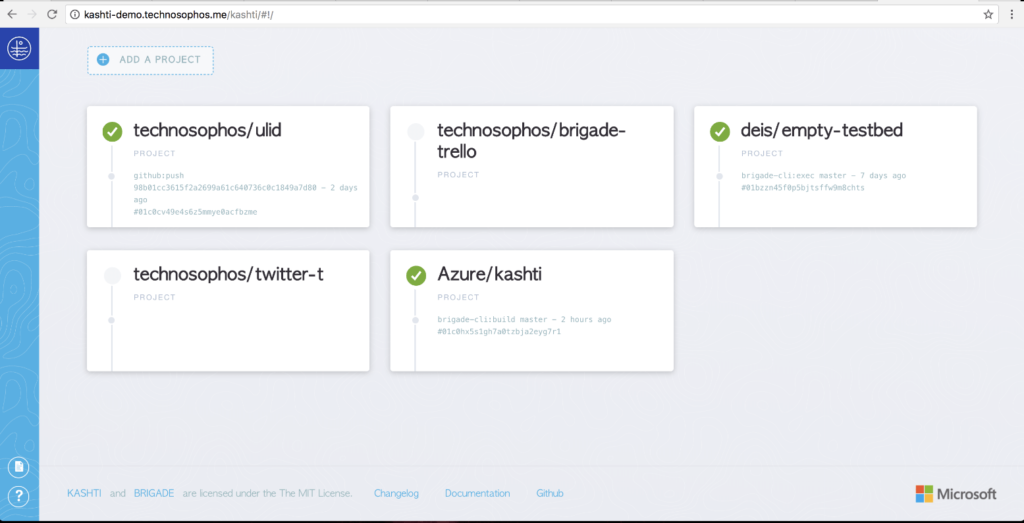At the Open Source Summit EU in Prague, a bit over a month ago, the team that brought you Helm and Draft announced Brigade, a scripting tool that helps developers and operations managers get their work done quickly by scripting together multiple tasks and executing them inside of containers in Kubernetes.
Now the same team is announcing an open source reporting dashboard and visualization tool for Brigade pipelines called Kashti (“kawsh-tee” — or कश्ती, which is Hindi for kayak, dinghy, or small boat) built as a Kubernetes service.
Kashti extends Brigade with an open source reporting dashboard web interface. Built as a Kubernetes service and installed using Helm, developers can easily manage and visualize their Brigade events and projects through a web browser. The Kashti project is in its early days and we hope that you’ll check it out, kick the tires and contribute.

Open source dev and ops on Kubernetes
Taken together with Draft, Helm, Brigade, and Kubernetes, Kashti completes the Kubernetes-native tooling chain to create a complete, open source, Kubernetes-native workflow for developers that:
- Tightens the development loop by making containerization, service composition, and iterative deployment for Kubernetes much easier (Draft)
- Makes deployment, packaging, and operations management of services more straightforward (Helm)
- Turns JavaScript functions into chained and contained ops workflows inside Kubernetes (Brigade)
- Makes Brigade DevOps workflows and their events visible instantly
- Natively executes in and uses the features of Kubernetes
Kashti: Viewing your Brigade container pipelines and events
Brigade is a framework for scripting together multiple tasks and executing them inside of containers. Following patterns popular in other forms of “serverless” computing, a Brigade pipeline is triggered by an event. When an event occurs, the appropriate event handler is given the opportunity to respond. Brigade responses, however, are not limited to functions, simple or complex. Instead, Brigade allows you to define a sequence of jobs that each run as Kubernetes pods, tied together with simple JavaScript control flow and concurrency primitives. It’s a form of “structured serverless” that you own, completely. If you haven’t worked with Brigade yet, read all about it at here or grab the code on GitHub.
Kashti provides a dashboard view into Brigade events and projects so that you can quickly understand the status of your pipelines no matter what kind of work they do.
Although Kashti displays the current state of any Brigade project, it really shines in the most common type of event-driven pipelines, continuous integration and deployment (CI/CD) pipelines. Installing Kashti in conjunction with a Brigade CI/CD pipeline gives you immediate visibility into your build and deployment systems. The following video shows the dashboard in action, using a JavaScript file that is triggered by repository pushes and pull requests.
Kashti features
Kashti makes many dashboard and reporting steps easier to do in Kubernetes. You can:
- Install Kashti as a Helm chart
- Use the web-based dashboard for any accessible Brigade projects
- Filter by event type
- See a waterfall diagram of your Brigade builds
- Get output of the logs of each job in your Brigade build
- Check on the status of your builds
- Get a quick peek at the configuration for your builds
Together, Brigade and Kashti make constructing and viewing CI/CD pipelines, as well as any other type of Brigade workflow, much easier and more understandable in Kubernetes. For more information about Kashti or to access the source go to GitHub. Read all about Brigade here or grab the code on GitHub here.
Learn more about this new tool at the Azure KubeCon booth or let us know what you think in the comments.
